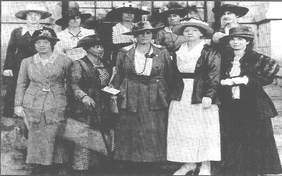History
|
The remarkable industrial expansion that occurred after the beginning of the First World War opened up many opportunities for women. The increase of urban populations with its consequent industrial growth, led to opportunities for women in industry and in social work. At this time women were already well established in the teaching profession and entering medicine, law, journalism, nursing and social work in larger numbers.
Some of the leaders among university women in Canada had long dreamt of a national federation, but the effective impulse to found it came from Great Britain. Early in 1919, Dr. Winifred Cullis of Britain, who had spent time in Canada during the war years lecturing at Toronto University suggested that women in Canada might wish to organize a national federation so that Canada might become one of the first countries to join in the emerging International Federation of University Women. A similar suggestion came from Virginia Gildersleeve of the American Association of University Women to the effect that, while she hoped the Canadians would form their own federation, but that they might if they preferred, be allied with the American Association. Canada’s response was immediate. In March 1919 at a conference of four of the leaders in university organizations - Mrs. J.A. Cooper, President of the Toronto Club, Mrs. R.F. McWilliams, President of the Winnipeg Club; Miss May Skinner, then representing Canada on the American Association’s committee on International Affairs; and Miss Laila Scott in Toronto it was decided to create the Canadian Federation of University Women. |

